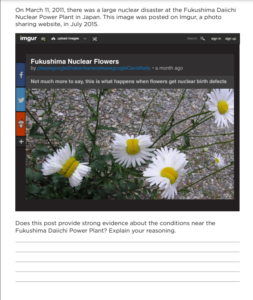As time passes it becomes more and more important to be able to distinguish fact from fiction on the internet as the average amount of usage continues to grow. The Canadian Telecommunications Association declares that “Mobile wireless users in Canada are consuming more mobile data than ever, with the average data usage per subscription reaching 7.1 GB per month in Q2 2023, a 20.5% increase from Q2 2022.”

This increase in usage is only going to keep increasing around the world, and with the introduction to newly developed A.I. tools it is also becoming increasingly easy to produce misleading information and post it across the internet. For this reason teaching digital literacy holds more importance as finding and accessing reliable and correct information will always hold use throughout one’s life and career. My main subject area is Math, and for elementary to high school the only concern would be a student learning a wrong method of solving a problem from either A.I. or an unreliable source on the internet. For this reason finding and recommending reliable sources (such as Khan Academy) can solve most issues in this regard. However my secondary subject is Science which is ever changing and full of new theories being posted and tests being performed. For this subject it would be very important to teach students how to conduct proper and reliable research in order to correctly find true information and not get sidetracked by false science or facts.
Exploring the School Library Journal’s article on “The Smell Test: Educators can counter fake news with information literacy. Here’s how.” I loved how they mentioned the importance of the school library and of the role librarians could hold regarding the subject stressing “the importance of librarians having the training they need to teach media and news literacy”. While elementary and high schools may not have the most impressive collection of scholarly books and articles, teaching students how to access reliable information from libraries will only continue to benefit the student’s journey if they choose to continue into university after graduation. The article also recommends showing students resources such as Snopes, Politifact, and FactCheck which are reliable resources for the student to use in checking the accuracy of information found on the internet.
Flipping through Web literacy for student fact-checkers by Mike Caulifield was also helpful as it discussed four simple yet solid tactics to testing information found online, categorizing them as: Check for previous work, Go upstream to the Source, Read laterally, and Circle back. Using these for steps in sequence creates a convenient circle Mike Caulifield also dedicates large sections of the book to going further in depth into each step and how they can adapt depending on the circumstances.

The third resource I found incredibly helpful was the KQED lesson plan for teaching internet literacy. This lesson plan heavily uses a Stanford study that measures a student’s ability to “evaluate online evidence” as well as recommends some methods and exercises one could perform to help teach the students. A sample question taken from the study can be seen below. A lesson plan like this is nice as it can be adapted or referenced when creating a lesson plan of my own in the future.
